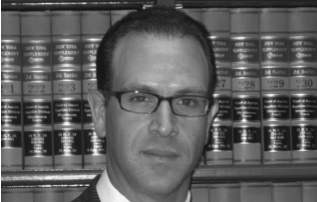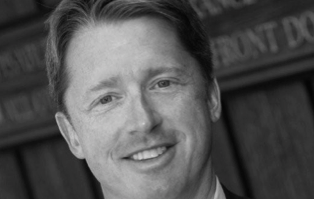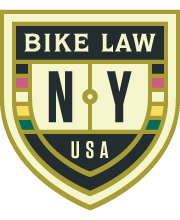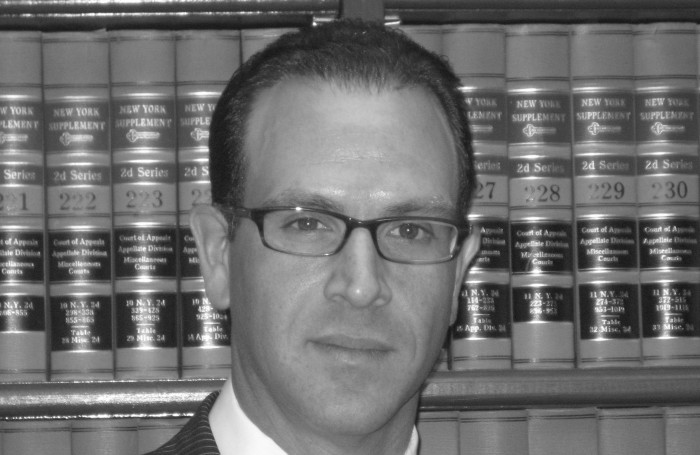New York is a study in contradictions. The state is ranked 29th for bicycle-friendliness in the League of American Bicyclists’ 2014 annual ranking. And yet New York City is ranked as the most bicycle-friendly city in America by Bicycling magazine. Under the leadership of Janette Sadik-Khan, and with the support of then-Mayor Bloomberg, the city made dramatic strides towards integrating bicyclists into the city‘s fabric. And yet under the leadership of then Police Commissioner Ray Kelly, the police department has seemed to be engaged in a war with cyclists, periodically engaging in stringent crackdowns for violating imaginary laws, all in the name of “bicycle safety,” while simultaneously refusing to charge dangerous drivers for real violations that have resulted in serious injuries and deaths.
But New York is bigger than The Big Apple, stretching upstate, north to the Adirondacks, and west to the Finger lakes, and beyond, to the Great Lakes. To get a better picture of the state of cycling in the Empire State, I recently talked with New York bicycle accident attorneys Daniel Flanzig and Jim Reed, of Bike Law New York.

Daniel Flanzig

Jim Reed
***
Bob: Daniel, Jim, thanks for taking the time to talk with me. First, I’d like to welcome you to the Bike Law network. You are both well-known in New York cycling circles; you co-author Wheels of Justice, a monthly column for the New York Bicycling Coalition, and are both board members of the NYBC. Can you tell me how you first got involved in representing cyclists in New York?
Jim Reed: I have been an avid cyclist my entire life— back in the dark ages of the mid ‘70’s, I raced when hardly anyone in Upstate NY was even riding or racing. After I got out of law school in the mid ‘80’s and began practicing injury law, it was only natural that I would gravitate to the representation of my fellow cyclists with whom I had a close, personal connection. For the last 30 years, I have been proud to represent many cyclists in all types of cycling cases.
Daniel Flanzig: I first moved to New York City during Law School. I began biking around Manhattan and Queens well before bike lanes existed. It was a very different environment. After law School, similar to Jim, I started practicing personal injury litigation. After representing a number of cyclists in Manhattan, Brooklyn, Queens and Long Island, I noticed a gap in the downstate legal community for attorneys who focus in this area. Now for almost 20 years my firm has been representing cyclists throughout NYC, Long Island and Westchester.
Bob: Let’s talk about what’s happening with cycling in New York. As you know, Bicycling magazine has recently proclaimed New York City to be the number one bicycling city in the nation. Yet, in that same article, New York State, also had the most dangerous. So congratulations on that achievement. And yet for years, there’s been an ongoing state of anti-cyclist hostility from the NYPD, one of the most most blatant examples being the annual “crackdowns” in which officers frequently write tickets for imaginary violations. What’s that about?
Daniel Flanzig: It’s great that NYC was recognized for the huge increase in the number of bike lanes and other bike infrastructure. It’s an impressive achievement in such a short period of time. But it is troubling to me that I practice in two Jurisdictions that Bicycle Magazine listed as both the number one cycling city, as well as the worst, Suffolk County, New York. A relatively short distance apart, they are divergent cycling cultures. In 2008 Suffolk accounted for 23.8% of all cycling fatalities in the State of New York. State and County legislators in Suffolk County need to wake up and realize the need for better education of motorists and creation of bike and pedestrian infrastructure. This is part of the work Jim and I are doing with NYBC and plan to have some real “boots on the ground” programs for Suffolk this upcoming year.
On the issue of the NYPD, I believe the tension started to grow during the Times-Up rides years ago. Although a lot of that has subsided, the tension still exists. Cycling in NYC is far from new. However, between 2007 and 2011 the number of bicycle commuters in New York City has almost doubled. Add to that, 6000 Citi Bikes and unknown numbers of recreational riders. Through this time, as far as I am aware, the NYPD has failed to adapt any type significant training on how to deal with this massive increase in cyclists. They are misinformed on the laws and how to apply them to cyclist. They don’t recognize the dangers cyclists face and how they have to adapt their riding in an urban environment. Leaving a marked bike lane is sometimes simply the safest path however it subjects a cyclist to a fine. The focus of the NYPD and NYC’s “Vision Zero” needs to be on driver education as well as inattentive and dangerous drivers, not cyclists.
Bob: Tensions flared up again recently with the death of a pedestrian in Central Park. What are your thoughts on this incident?
Daniel Flanzig: Central Park is a unique space shared by thousands. Responsible riding is necessary when cycling in that environment. However, the overwhelming police response was not consistent with the threat cyclist pose. As sad as this event was, bike vs. pedestrian fatalities are a rarity in New York City and pale compared to the number of serious injuries and deaths at the hand of negligent motorists. I have represented hundreds of cyclists injured or killed in crashes with motor vehicles but in my 20 years of practice I have rarely received calls about serious bike vs. pedestrian collisions.
Bob: Do you see any chance of changing the relationship between New York City’s cyclists and the NYPD? And if so, how?
Daniel Flanzig: Yes, I am very optimistic about that. Around the Country Police Departments have adapted educational programs for its members. They focus on educating officers on the reality of riding in urban and suburban environments and why cyclists ride the way they do. I am hopeful that the NYPD will quickly catch up with other cycling cities and add a larger focus on bicyclists during academy training. It would also be great if they would consider post academy training to its existing 33,000 members. I am confident with better training and education the friction will be reduced.
Bob: What is the cycling environment like in New York, both in New York City, and in the rest of the state? Do drivers generally accept the presence of cyclists on the road, or is there hostility towards cyclists?
Jim Reed: Having ridden in virtually every area of New York from NYC to Buffalo to the North Country, I have personally observed both nice and nasty drivers throughout NY. Although some areas are definitely more friendly toward the presence of cyclists (i.e. the Finger Lakes area of Upstate New York), I have experienced both kindness and hostility.
Daniel Flanzig: I ride in both NYC and Long Island on a regular basis. Both have their pros and cons. I personally feel much safer riding in NYC than Long Island. NYC and its drivers have come to accept that sharing the road with cyclists is a reality. They might not like it, but they accept this as the new norm. In Long Island, most drivers still don’t get it. They need to adapt their thinking and face the fact that cycling on Long Island is not a fad and that we are not going away.
Bob: New York’s state ranking by the League of American Bicyclists—the League ranks New York as 29th out of 50 states—isn’t very impressive, but is by no means near the bottom. What is the political mood in the Capital? Is there any interest in Albany for improving cycling in New York?
Jim Reed: Historically, the cycling movement hasn’t been particularly well-received in Albany but things seem to be warming and we are cautiously optimistic that there are better days ahead. I think many NY politicians and state agencies are starting to see the huge benefits cycling can offer in many different respects—health, improving urban transportation, tourism dollars and reducing fuel consumption.
Bob: You’re both on the Board of the New York Bicycle Coalition. Can you talk a bit about the NYBC? What kinds of projects are they working on?
Jim Reed: NYBC is the largest cycling advocacy group in New York and with the recent hiring of a very thoughtful, hardworking and articulate Executive Director, Josh Wilson, NYBC is really on the move. NYBC is targeting a few key legislative projects: E-bike legislation, a 3’ safe passing law, and specific inclusion of cycling safety education to the new driver curriculum and driver permit test.
Daniel Flanzig: I am very excited about the growth of NYBC and am proud to serve on its Board. Josh Wilson has done an amazing job for this organization during his short time at the reins. I am really excited about NYBC’s upcoming safety campaign and 2015 legislative agenda. 2015 is going to be a banner year for NYBC.
Bob: How much support is there for getting these projects implemented? Are the odds good?
Jim Reed: Although it is never easy to change old laws or add new laws, we at NYBC feel confident that with our hard work and the help of the many good folks who support NYBC, we will be successful in pushing our legislative agenda ahead.
Bob: You’re both New York bicycle accident lawyers. But Jim, you were also hit by a car, which makes you a bicycle accident victim. Can you talk about that? What was that experience like for you?
Jim Reed: Sadly, both my wife and I have had the horrible experience of having been hit while riding. Thankfully, both of us survived and have few remaining scars. But that experience was a real eye-opener for me for several reasons: First, it showed me just how quickly even an experienced, attentive rider can be hit. I was hit by a left-turning car that quickly turned into my path without a turn signal. Even though I saw the car and was going a reasonable speed, there was no time for me to avoid the inevitable collision. Second, as a person who is used to being active every day, a disabling injury that prevented me from doing the daily things I love—going to work, riding my bike, mowing my lawn—had not only a huge physical impact on me but a huge emotional impact. For the first time, I truly understood the pain, frustration and even depression that accompany a physical injury. I think it is that personal experience that lets me bond so completely with my cycling clients and motivates me to aggressively handle their claims.
Bob: How has that affected the way you handle bicycle accident cases?
Jim Reed: I think I am a much more zealous advocate than I was before I got hit. It ticks me off to hear insurance adjusters or defense lawyers try to claim it was the cyclist’s fault because “he failed to see the left turning car and take evasive action”. It makes me nuts to hear “it was only a broken leg”. My blood boils when they say “so what if they couldn’t work for 8 weeks or ride their bike for 3 months”.
I now know first-hand just how bad all this feels and that painful personal experience makes me ready to go to war for my bike crash clients.
Bob: Let’s talk a little bit more about bicycle accidents. New York is one of 12 states with a no-fault insurance system. What does that mean for a cyclist who has been hit by a car?
Jim Reed: The details of NY no-fault insurance can get very complicated but essentially no-fault for a cyclist in NY means that, regardless of who is alleged to have been at fault in causing the collision, the insurance company for the striking vehicle will pay your lost wages and/or medical expenses. The NY minimum NF coverage is $50,000 and some policies provide coverage over and above these minimal limits.
In exchange for coverage regardless of fault, a New York cyclist is not permitted to sue the striking vehicle unless he or she has suffered what the law defines as a “serious injury” (NY Insurance Law 5102): death, dismemberment, significant disfigurement, a fracture, loss of a fetus, the inability to do substantially all of your normal daily activities for 90 days, and several categories involving a limitation in use of a body function, member or system.
Daniel Flanzig: It’s important to remember that a no-fault claim must be filed with the vehicles insurance company within 30 days of the crash. This is a critical time limitation that New York cyclists must remember or they could forfeit their no-fault benefits. In some circumstances it can be extended such as a delay due to hospitalization or other disability. Make sure you obtain the insurance information of the offending vehicle as soon as possible.
Bob: What advice would you offer to cyclists in New York to protect themselves in case of a bicycle accident?
Jim Reed: Proper insurance coverage can mean the difference between financial devastation versus successfully surviving the financial damages caused by a bad bike crash. One quick insurance tip: if you are a NY cyclist who also owns a car, make sure you have at least $250,000 of SUM (Supplemental Under-Insured Motorist) coverage on your auto policy. This coverage protects you if you get hit by a car that is either uninsured or under-insured. You can read more about SUM coverage on my blog, New York Bike Accident Blog.
Daniel Flanzig: Prompt investigation is critical to any crash. I always recommend calling the police, even if you don’t believe you are seriously hurt. Many people don’t realize the extent of their injuries at the scene. The drivers leaves without the cyclist getting the proper information. I also suggest that independent of the police report you obtain the name of driver, the owner of the car, the license plate number of the vehicle and contact information of any witnesses.
After repeatedly seeing my clients not knowing what information to obtain after an accident I developed the “Bike Crash Kit”, a free App for both the I-Phone and Android Devices that walks you through the information you need to obtain after a crash.
Bob: And what advice would you offer to someone who has been in a bicycle accident in New York?
Jim Reed: I know this sounds self-serving but my best advice to any cyclist who has been injured on their bike is to promptly consult with an experienced bike crash lawyer. Most bike lawyers, like me, offer free, no-commitment consultations. This consultation is a no-risk, no-cost way for a cyclist to get answers to the many questions all injured cyclists have: who pays my medical bills, my lost wages, who pays for my bike?; why was a ticket not issued to the driver?; am I eligible for disability payments? etc…….
Daniel Flanzig: I would add that there is a significant difference between hiring a personal injury lawyer and a bike crash lawyer. A personal injury lawyer may be competent to handle your case but a bike crash lawyer who focuses on bike litigation understands certain nuances that other lawyers just don’t. I can almost guarantee you that a personal injury lawyer would never ask the cyclist if they were using Strava at the time of the crash.
Bob: Thanks for talking Daniel and Jim, I appreciate you sharing your insights. And Jim, thanks for sharing your experiences as a cyclist who was hit by a car. That gives us a unique perspective. Before we finish, do you have any last thoughts?
Jim Reed: New York is a beautiful state for cycling. Come join us! I live in the Finger Lakes region of Upstate New York and I am always willing to offer cycling advice to any cyclist interested in exploring all the great riding NY has to offer. Feel free to email me anytime at JimReed@bikelaw.com
Daniel Flanzig: Both New York City and Long Island have so much to offer for cyclists. From the TD Five Boro Bike Tour to the “Tour of the Hamptons”, the riding is challenging and beautiful. In the event you have a cycling issue while riding in NYC or Long Island I am always available for free “bike Law” advice at DFlanzig@NewYorkBikeLawyer,com or at 1-866-Flanzig.
***
Bob Mionske is a former U.S. Olympic and pro cyclist, and a nationally-known bicycle accident lawyer based in Portland, Oregon, and affiliated with the Bike Law network. A prolific advocate for the rights of cyclists, Mionske authored Bicycling & the Law in 2007, and has continued his advocacy on behalf of the rights of cyclists with his Road Rights column inBicycling magazine.







Dear Jim and Daniel
Just read your interview with Bob Mionske. As a native New Yorker (Buffalo, Rochester, Stony Brook), I’m glad to have guys like you on our side.
I was a graduate student in geosciences at Stony Brook, out in Suffolk County, from 1977 to 1987. One reason it took so long was that I was hit by a car while biking to campus and suffered a traumatic brain injury just as I was supposed to start my Ph.D. For about a year, nothing I tried to do made sense and I eventually took some time off and then started a different dissertation topic. Sure would have been nice if I knew guys like you back then.
In spite of my near death experience out in Miller Place, NY, I found Suffolk’s North Shore out to the East End a great place to ride. But my Ph.D. advisor, Gil Hanson, tells me its pretty grim out there now. Having read your interview showing that so many of NYS’s bike fatals are in Suffolk, it sure does sound like a different place. That is too bad.
Khal Spencer
Los Alamos, NM
Board Member, Bicycle Coalition of New Mexico